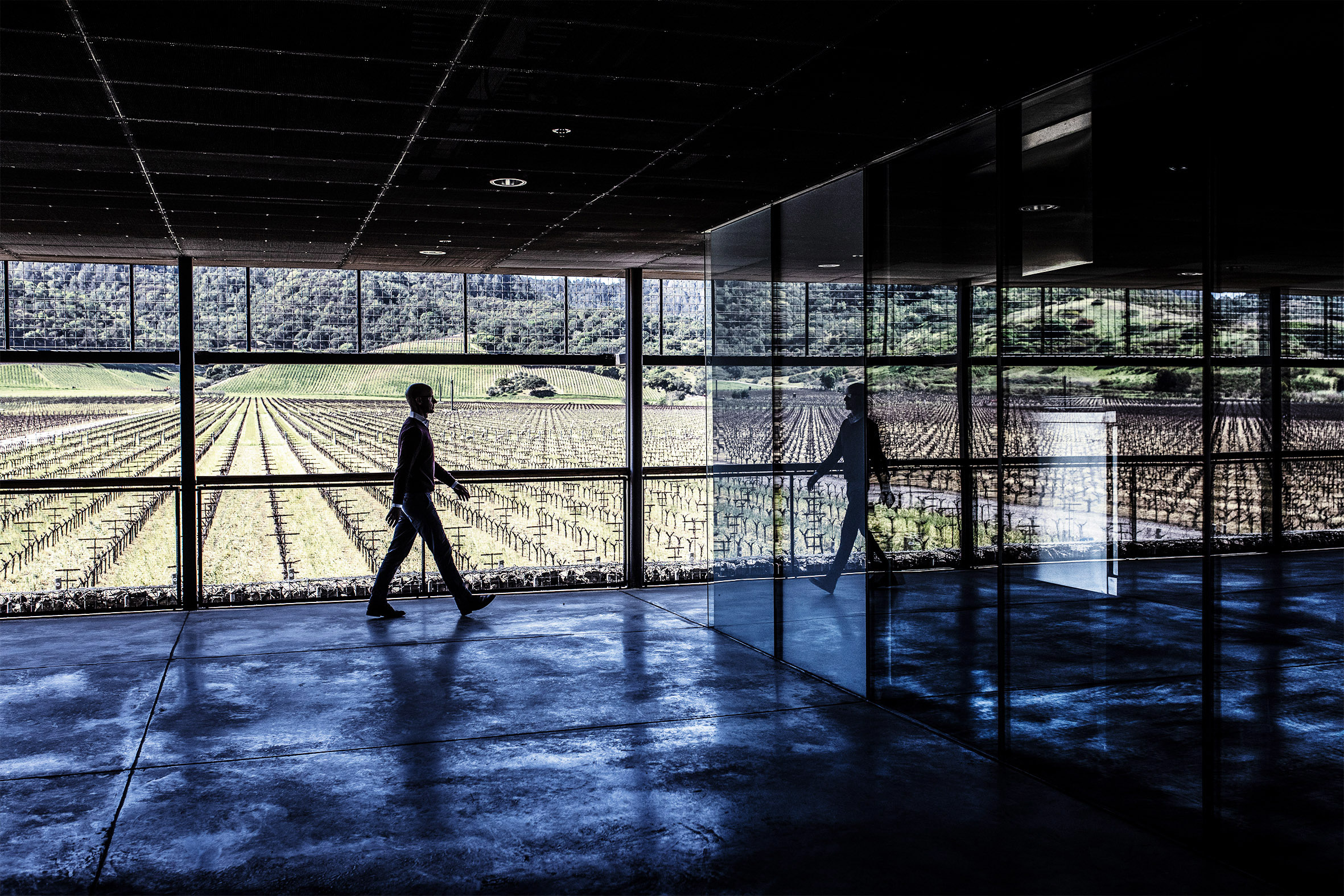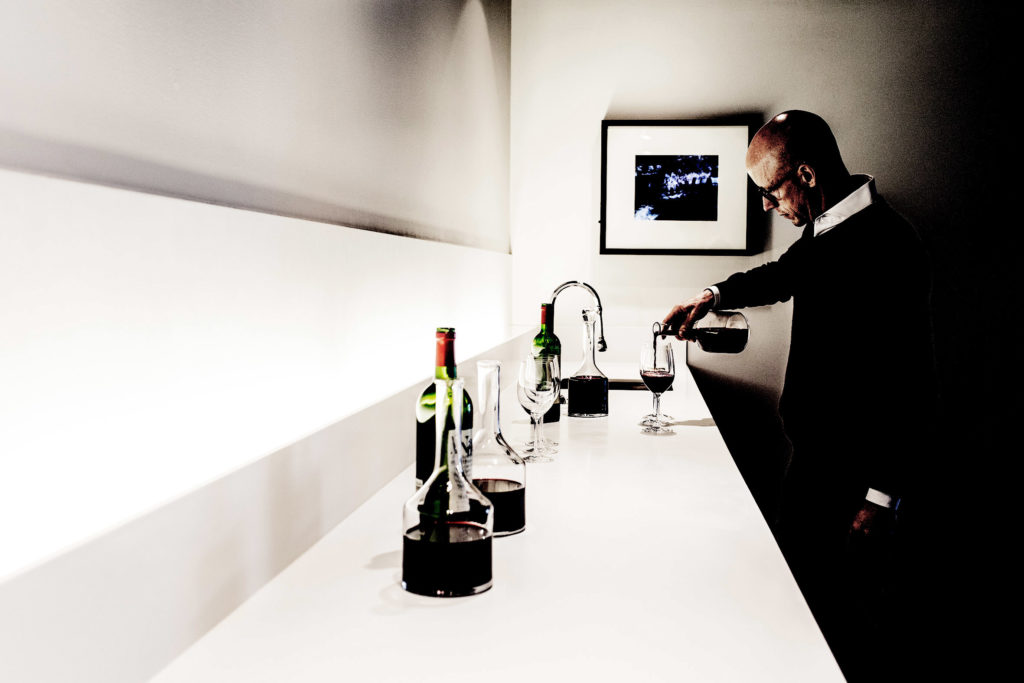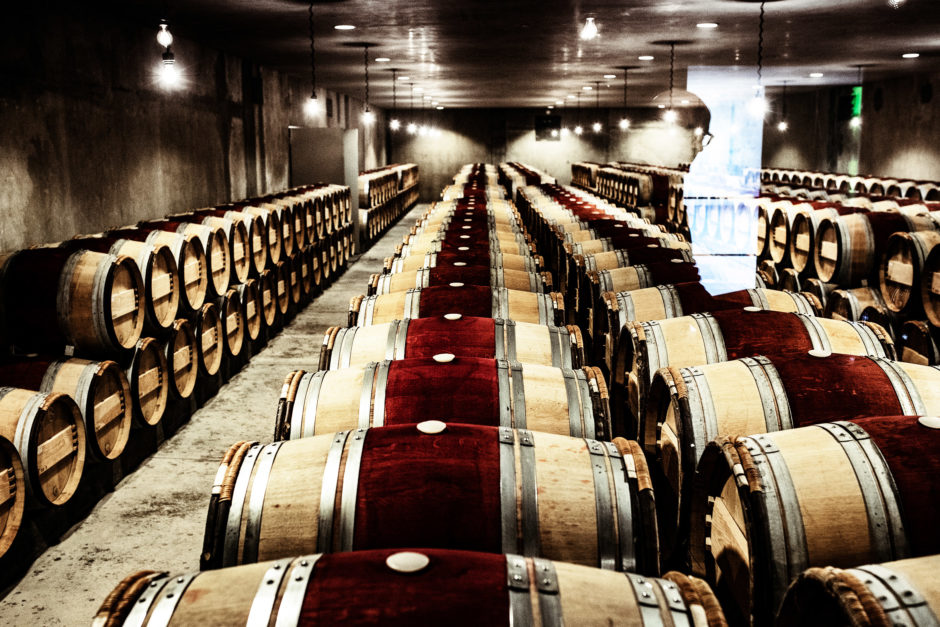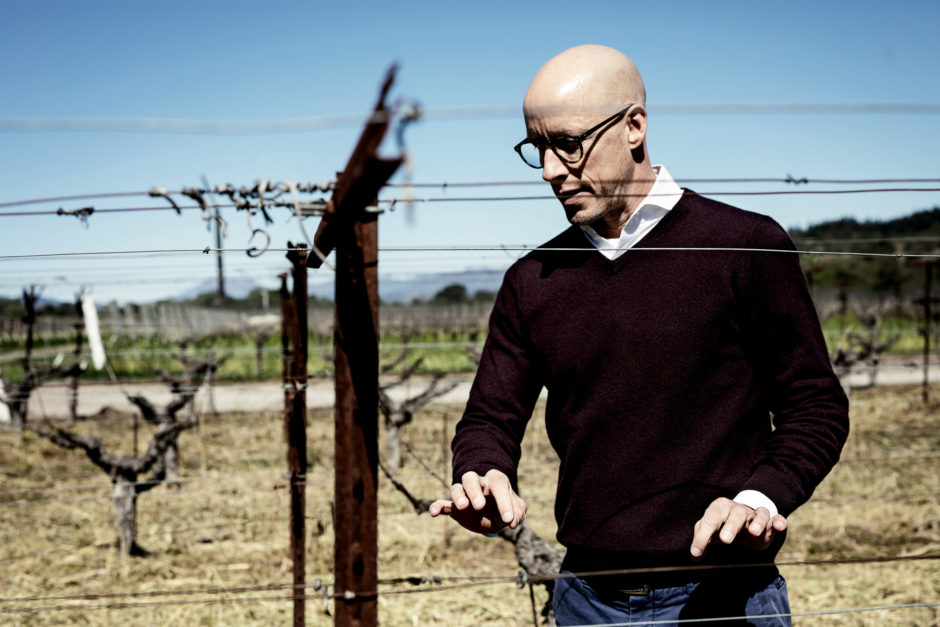28th Mar 2022
Coming up to the spring releases of 2019 Napanook and Dominus, Lisa Perrotti-Brown took the opportunity in March to taste with the estate’s director of viticulture and winemaking, Tod Mostero. Tirelessly striving, continually improving, we discover what’s new behind one of Napa Valley’s greatest labels.

Napa Kaizen
Even though there are only two wines to taste, my annual Dominus visits usually take two hours or more. Tod Mostero, the estate’s director of viticulture and winemaking, never fails to have something new to show me. He and owner Christian Moueix resist routines and formulas. Constantly observing the land, the vines, the climate, the weather, and the people, they hypothesize, experiment, and adapt. Dominus has this kaizen kind of approach to farming, a system of continual improvement, which is fascinating considering they regularly achieve the highest acclaim and demand outweighs supply. One might question, why fix what isn’t broken?
Dominus has this kaizen kind of approach to farming, a system of continual improvement.
Sheep. This was the most obvious new thing that caught my eye as I stepped through the iconic Herzog & de Meuron tunnel between the winery and the Dominus offices and cellar, leading out to the sprawling Napanook vineyard and Mayacamas mountains beyond. Dominus is not the first winery in Napa to use sheep to trim the cover crops and under-vine growth before budburst; nonetheless, it is a sustainable sight to behold. For the first time this year, hundreds of sheep have been rented and moved across the grazable vineyard sections using portable electric fencing. Certified organic in 2021, the estate does not use potentially dangerous chemical herbicides such as Roundup (the most efficient means of controlling weeds and still used by many). One advantage sheep offer over the mowing or plowing alternatives is they minimize soil compaction from heavy machinery, which is particularly important when dry farming (more on this in a moment), and they leave behind a natural form of fertilizer as a bonus.

“2019 began wet,” said Mostero as we later sat with the newest bottled vintage in front of us. “We had 53 inches during the winter and spring—nearly double the average rainfall for that time of year. This is the first key. The rainfall heading into the growing season was way beyond normal. Then April was dry. The rain drained, and the water table started coming down. It was a warm April, so everything was growing. May is normally dry, usually less than an inch, but we had 3.7 inches in 2019. This is enough to increase the water table again. This wet spring meant lots of growth, sucking the water out of the soil. This type of wet start to the growing season can be risky. Toward the end of the season, the vines can struggle and crash when the water has been depleted. With limited growth early in the season, you don’t get that crash because the vines are naturally better balanced. So, it was a matter of what to do as viticulturalists to keep the vines in balance and keep them from crashing. Typically, in this situation, people thin the shoots early in the season.”
Dominus is not the first winery in Napa to use sheep to trim the cover crops and under-vine growth before budburst; nonetheless, it is a sustainable sight to behold.

It is not without reason that Mostero is hypersensitive to precipitation levels. Dominus is one of the few vineyards in Napa that is dry- farmed (receives no irrigation water), except for the young vines during their establishment phase of approximately four years. The origins of dry farming this 100+ acre site can be traced back to some of the first vines planted in Napa Valley by George Yount in 1838. Of course, there was no means of effectively irrigating such a large plot of land back in those days, so it was then more out of necessity than philosophy. But today, irrigation in Napa is ubiquitous. It took a firm philosophical stance by Christian Moueix, who firmly believes dry farming is closely linked with the expression of terroir, to buck the drip-feeding trend.
Moueix and Mostero contend that dry farming is “a proactive practice which depends on experience and constant observation.” Apart from encouraging vines to grow deeper roots (rather than hugging the drip) by forcing them to seek-out underground water sources and nutrients, there is evidence that it increases resistance to drought and strengthens the vine’s natural immune system. Equally important, dry farming conserves water, which is becoming increasingly scarce in drought-prone areas such as California. (Ask any Californian farmer to comment on the problems with access to water during the 2021 growing season.)
“We ran an experiment with thinning some vines earlier and some later in the season to help us better understand the best means of managing this growth situation caused by the wet spring,” continued Mostero. “The other key factor in 2019 was the heat. April was warm, and May was cold. June through September was higher than average, but without the heat spikes, which could have been detrimental. The critical time is after veraison when berries are more susceptible to burning. We did have a heat spike of 105 degrees after veraison in 2019. This was not so hot, but increased canopy can create a lot of heat around the clusters. Interestingly, on the vines we thinned later, the berries that hadn’t been exposed thus far blanched; they turned kind of pink.”

Selection is critical to the success of Dominus, and both optical and hand- sorting are employed. The components with “more loosely woven tannins and more approachability when young,” according to Mostero, are selected for the Napanook label.

- Tod Mostero"In 2019, we wanted to avoid over-ripeness, over-oaking, and over-extraction."
“In 2019, we wanted to avoid over-ripeness, over-oaking, and over-extraction,” said Mostero. These comments could seem redundant. Dominus repeatedly, effectively swerves all these pitfalls in the winery. But I’ve never found Mostero or Moueix to assume anything. Which brings us back to the question, why fix what isn’t broken? After all, the consistency of quality at Dominus, particularly over the last two decades, is so impressive it’s almost annoying. But when we look beyond the intrinsic and extrinsic rewards of achieving or owning a thing of the highest quality, Dominus reminds us that wine can be experienced and enjoyed not simply as a fixed thing but as a process. Sensitively made wines can, rarely, deliver evolving expressions of time, place, and people, an endeavor requiring constant questioning and continual improvement. Far from formulaic, resisting routine, Dominus embraces this undertaking.
–
Article & Reviews by Lisa Perrotti-Brown MW
Photos by Svante Örnberg

PRODUCERS IN THIS ARTICLE
> Show all wines sorted by scoreMore articles

2021 Bordeaux in Bottle and A Modest Proposal
24th Apr 2024
599 tasting notes

Pilcrow’s New Releases
18th Apr 2024
7 tasting notes

Bordeaux 2023 Primeurs Photo Essay
18th Apr 2024
0 tasting notes

Harlan Estate, BOND, Promontory 2021 and 2011
11th Apr 2024
14 tasting notes
Show all articles